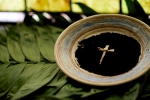November 2012
Liturgy, Music, & Leadership
Las Posadas: Hospitality & Evangelism
In Los Angeles, at the Cathedral Center of St. Paul, the sure sign that Christmas is nearing is the faithful observance of Las Posadas, a traditional evening procession and celebration with 400 years of history and a fresh approach for hospitality and evangelism.
“In this way, we reach out and welcome in the whole community into evenings of prayer and song -- and fun for the children, especially with the piñatas each night,” said Bishop J. Jon Bruno, provost of the Cathedral Center and its Congregation of St. Athanasius, located in the city’s Echo Park district.
“For many immigrants, posadas are expressions of personal faith and family traditions brought to Los Angeles from other places in Latin America,” Bishop Bruno said. “They are meaningful and joyful times that mark each person’s ongoing spiritual journey.”
Spanish for “lodgings” or “accommodations,” posadas re-enact Mary and Joseph seeking shelter for the imminent birth of Jesus. Posadas usually occur each evening Dec. 16-24 when groups of Christians walk together in procession, stopping at homes where lodging is refused, but eventually reaching a destination where a fiesta – usually replete with warm tamales and cups of atole or ponce – awaits participants.
Estella Garcia, parishioner and lay leader in the Congregation of St. Athanasius, says the observance holds meaning and joy for participants of all ages. “Posadas remind us what Mary and Joseph went through as they were looking for lodging and a place for Mary to give birth,” said Garcia. “This also reminds of what other families go through in struggling to find shelter and food today.
“At the same time, the celebrations are joyful for everyone, and the young people look forward to the fun,” Garcia said, also noting the sense of remembering through the years and generations, marking time, and keeping cultural customs that were once part of her own family’s heritage in El Salvador. “This is another part of our spiritual journeys, and preparing for Jesus’ renewed presence in our lives,” she added.
Central to each observance is the nacimiento, or nativity scene, often large and intricately designed with succulents, moss, and other plants; decorative rocks; numerous animal figures; and the eventual placement of statues of the holy family, shepherds, and – on Epiphany – the magi. The Congregation of St. Athanasius – the first and oldest Episcopal parish in Southern California – offers just such a rich display.
Through the years, other posadas within the six-county diocese have taken up community-action themes, sometimes focusing on response to homelessness while also increasing cross-cultural awareness. Similarly, in the 1990s, the annual Pasadena Posada – an early-December walkathon-type event launched through the AIDS Service Center and All Saints Church – was a popular, successful citywide fundraiser for HIV/AIDS ministries.
Los Angeles Bishop Suffragan Diane Jardine Bruce – who shepherds multicultural ministries in the diocese – helped coordinate posadas while a parish priest in Orange County, California. “Everyone,” she said, “benefits from participating – through song and walking home to home – re-living the journey of Mary and Joseph to the manger.”
Robert Williams is canon for community relations in the Diocese of Los Angeles.
Resources
- La Posada @ Iglesia Episcopal de San Pablo (video)
- Las Posadas
- Las Posadas: The Stewardship of a Warm Latino Welcome (video)
- More on posadas in Los Angeles and in other dioceses of the Episcopal Church






